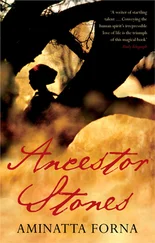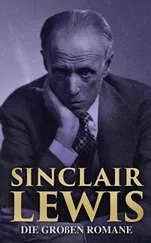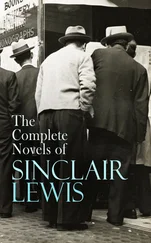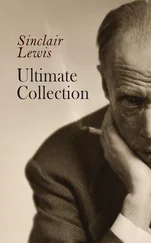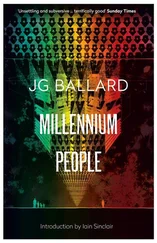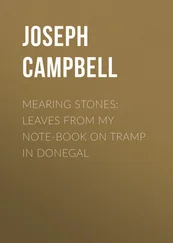Some clown, or cabal of clowns, had decided that the way to soften up the punters for the exploitation of Dagenham, Barking and the brownfield acres was to treat the dirt highway, the A13, as an art work. Grunge giving way to glamour: ‘Young Architect of the Year’, Tom de Paor, has been invited to reconceptualise the hard miles.
‘This is really charming,’ he said — of the views around the Ford factory — to the man from the Standard. ‘All roads lead to Barking. It’s the belly button of England.’
He’s done his research, this thiity-something Irishman. ‘The place is full of gangsters. The Gunpowder Plot was hatched here. Dudley Moore limped to this school,’ The project, de Paor’s makeover, will be called: Arterial . Drivers, drifting through the doctored ecosystem of recent history, alternating bands of colour-coordinated crash barriers, paths in green, white and gold, steel posts with blue landing lights on top (road as runway), will experience ‘a perpetual rhythmic form whose movements are all of a piece’.
I’m still mired in the recent future. The ‘shifting moiré pattern’ of the road is at a standstill, while preliminary civil engineering work is completed. The award handed to the young architect (angular specs and reddish Stephen Dedalus beard) was co-sponsored by steel company Corus, who are currently downsizing unsightly and unprofitable rolling mills in South Wales. We’re all advancing, like it or not, into projective time, visions that should never be realised. But this tops Gateshead, Glasgow, Liverpool, any of those cities of culture. No other spread of defunct industry and conceptual art, I must acknowledge, could offer a spectacle to compare with ‘the oldest metal flyover in Britain’ — alongside New Age geographer Chris Street’s sacred triangulation (East Ham Church, holy well in Central Park, Barking Abbey).
I sat on an excavated tump of earth (still slightly hot), on the north side of the A13, opposite Beckton Alp. I wished that I still smoked cigars, Burma cheroots. Why not? What is there to lose? The device that Conrad exploits in Nostromo — call it breathing space — a group of men, Anglos, high Latins in dark coats on the harbour wall lighting up. Good punctuation. Suspension of narrative bluster. Sunlight dancing on wave crests. Silver ingots in a lighter — riding low in the water. Gentlemen who know how to smoke.
I watched Norton’s troop, defeated cavalry, the mules shot out from under them, zigzagging (Herzog style) up the Alp; scrambling for footfalls, dowsing for heat. Was I responsible? Did I really write such nonsense? Norton, sweating, gasping for breath, trying to hold it together, this three-in-one narrative (great-grandfather, Joseph Conrad at Stanford-le-Hope, Stanley Kubrick), consoled himself with a single thought: it’s not true . This never happened. I’m not here.
But it is. True as Herzog’s films, as Fitzcarraldo or Aguirre, Wrath of God : recent history, recorded history, researched, re-enacted. They will build a boat and drag it through the jungle, over that slope. They will descend the precipitous path to the final river. Monkeys and arrows.
Wednesday, 26 March 2003: breaking off from writing, imagining this journey, a lovely warm, false spring afternoon, in a fug of rubber fires and yellow dust, I walk to Beckton Alp and on to Barking. It did happen, it is still happening — until I sit down at my desk to mar the purity of that day by straining after documentary truth. The unreasonable desire to convince strangers, editors, publicists, critics, readers.
I could do nothing about Track and Danny, a conversation I didn’t hear. I couldn’t help Norton. Or save Ollie from her fate at the ibis hotel. My only option was to swing away, let them complete their preordained trajectories, while I shadowed them, off-highway, through Central Park in East Ham and down Barking Road to the Abbey.
Central Park, unexpectedly, lives up to the brochure: out of the traffic, the nuisance, into urban tranquillity. A little Eden. Open railings, by some acoustic freak, muffle street noise. A limited green space expands as you walk into it. Elements, such as the standard war memorial obelisk, acquire an affecting gravity. Chris Street, promoting this obscure patch as a gateway to the stars, might be on to something. A celestial rival for the mundane visions of the politicians and city planners.
As promised, in the north-west corner of the park, I found a granite fountain that stood in for the lost ‘Miller’s well’. The fountain belonged in Hastings (it should have been filled with water). My twin tales were coming together: the fallen menhir of Amazon Street with the memorial slab outside the Royal Victoria Hotel in St Leonards, the Central Park fountain with the Castello fountain on the marine parade. Road and coast. Thames corridor and seaside: linked narratives. Maps of separate countries with the same symbols, the same plan.
If Hannah had been with me …
Young couples, Asians mainly, were canoodling, courting on benches. The park was shaded, discreet. Zones kept to themselves. Frutescent alcoves for lovers. If Hannah was with me … She’d snort — plupfff — at my notions of Jungian synchronicity. The psychologist’s famous dream in which Liverpool is also Basel. The various quarters of the city were arranged radially around the square. In the centre was a round pool.’
Otherwise known as: the East Ham mandala. Absence of water. The perfectly round granite cup is a memorial to a buried well. A fountain filled with bread . The raised octagonal island at the centre of the bowl: an aperture blocked by a stale loaf. The outer rim of the dish is packed with brown and white slices, mouldy wads, pitta bread, liver-spotted nan, chapati, waffles, pancakes. This dry fountain swam with dough, untouched pigeon offerings.
And Barking Road, as I walked east in the soft twilight, shadowing Norton’s fictional pilgrims on the A13, confirmed Chris Street’s speculation: a busy pub, hanging baskets, gold lettering on deep blue. The Miller’s Well , Free House. Make the journey and the tracings will always be there, not as history, but as parallel motif, random survival: a boozer, a drinking fountain, a dowser with kit improvised from industrial debris.
Barking Abbey, where teenage dealers make their moves among preserved ruins, offers spiritual benediction to a major retail park, a shopping city on the banks of the River Roding. The dead lie quiet. Gravestone craft, in relief, under full sail, make for the Thames. The Abbey was founded in AD 666 by St Ekenwald. A date whose ominous significance was justified by the pagan Danes: fire and sword. All the history that is worth retaining is etched into a tablet on an architectural fragment, a gateway known as the Curlew Tower.
A fat sun dropped behind bare churchyard trees, behind the MFI block, Paul Simon’s Curtain Superstore, Powerhouse. 50 p.c. off everything. At the golden hour, I could follow Chris Street’s theoretical alignment: through St Margaret’s Church to Tower Hill, on to Southwark Cathedral. Nothing is lost, nothing is obliterated. No interlude in park or abbey could ameliorate the coming horror of West Thurrock. The nightmare at the ibis. Journalists and psychogeographers, urban planners and venture capitalists: what difference? Spin as many versions as you like, the road will have the final word: Barking. The umbilicus. One stop beyond terror, two stops beyond boredom.
The ibis hotel, West Thurrock, was corrupted with watching. Journalists were embedded in the ground-floor bar, admiring themselves on television, stuffing their pockets with vouchers. When something bad happens, they are there to confirm it: places, previously innocent of news, are granted a heritage identity (black plaque). Houses are demolished: in the city of Gloucester, on the West Bank of the Jordan, Afghanistan. Concerned men in open-necked shirts, women in combat gear (with optional pashmina), they articulate the horror: Willesden, Hungerford, bleak moorland outside Manchester. Now, for one night only, Essex. The approach to the QEII Bridge: a double-header. Celebrity kidnap (botched, sold-out) + girl trapped in car with drug-crazed, sword-wielding psycho.
Читать дальше




